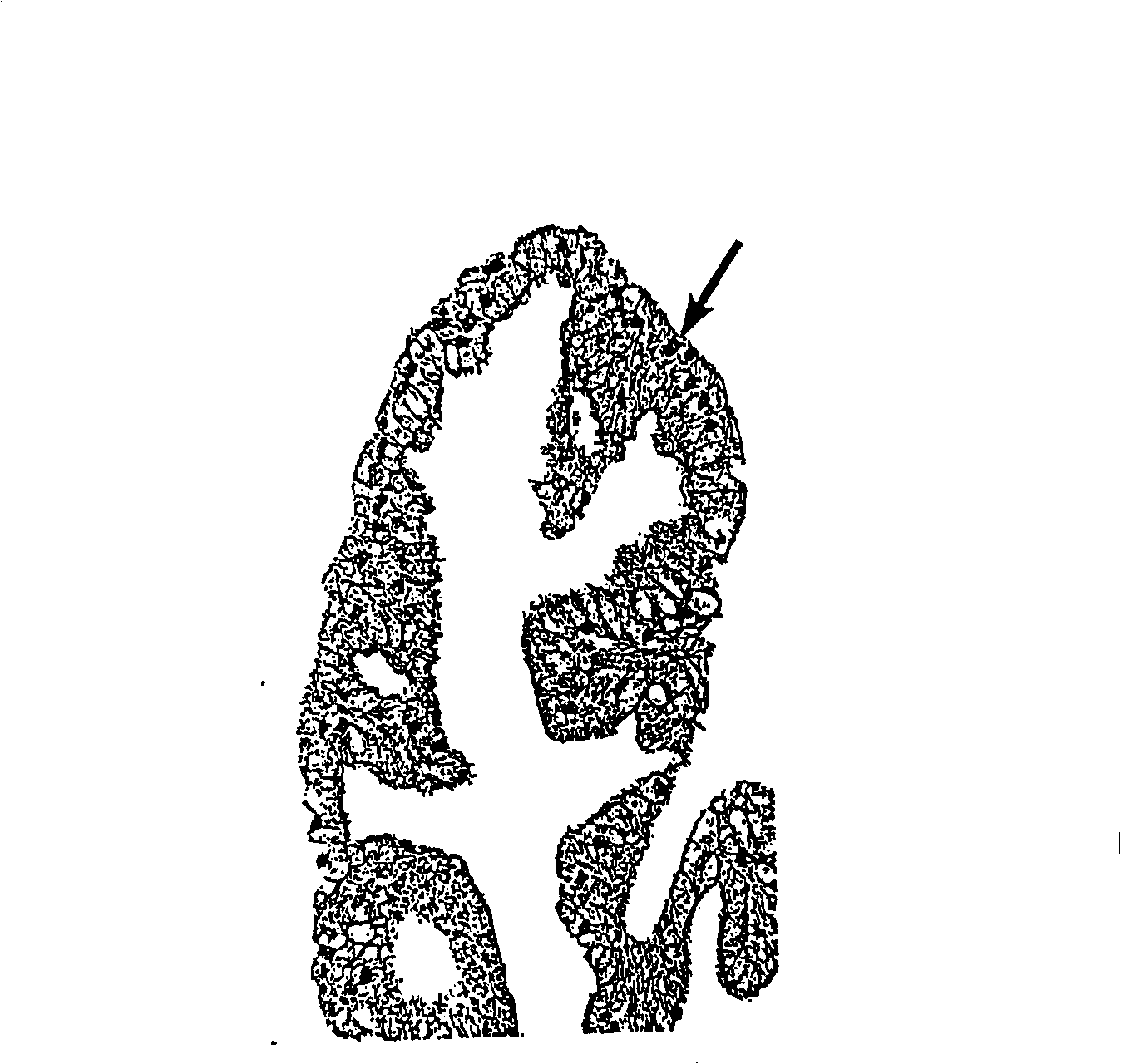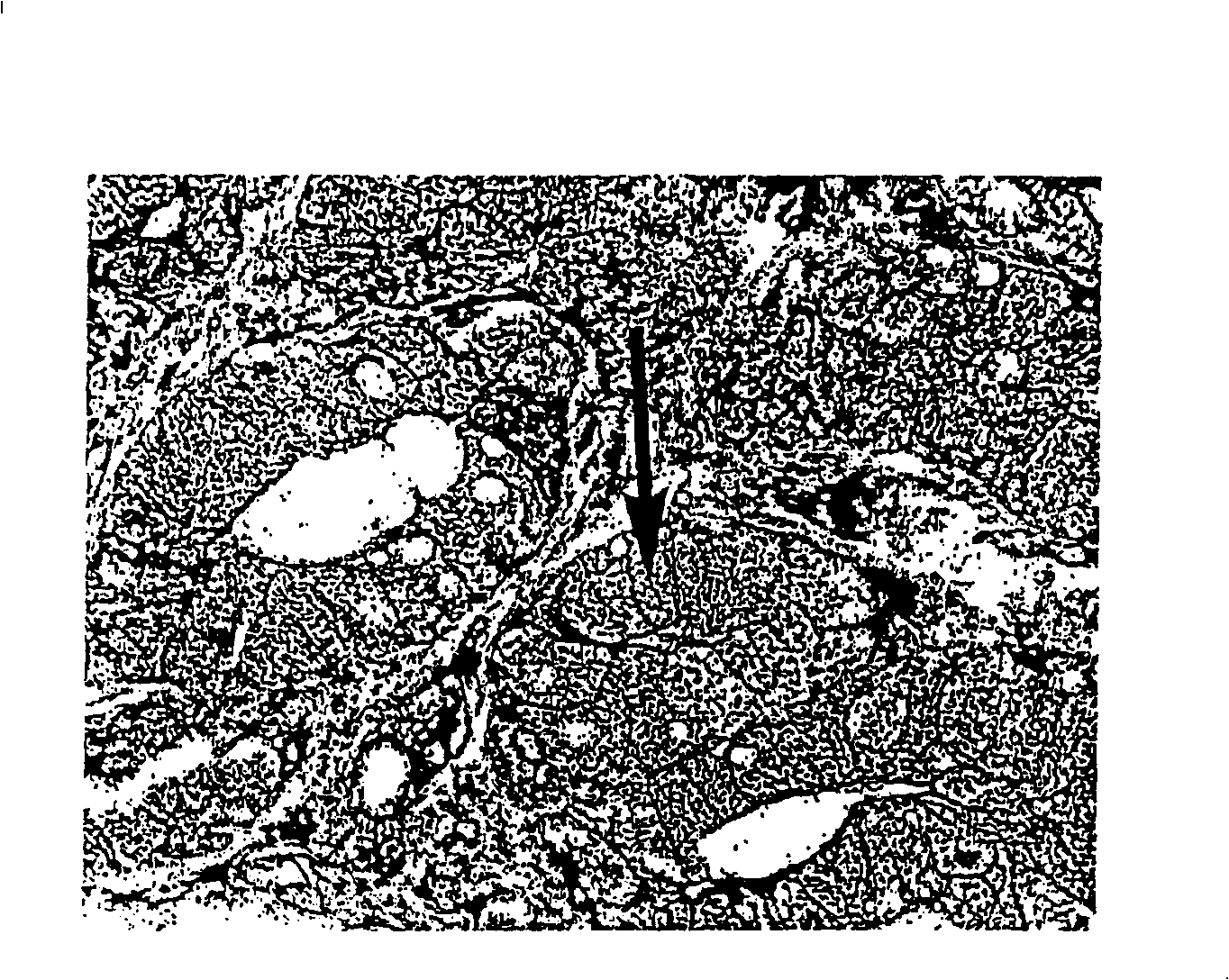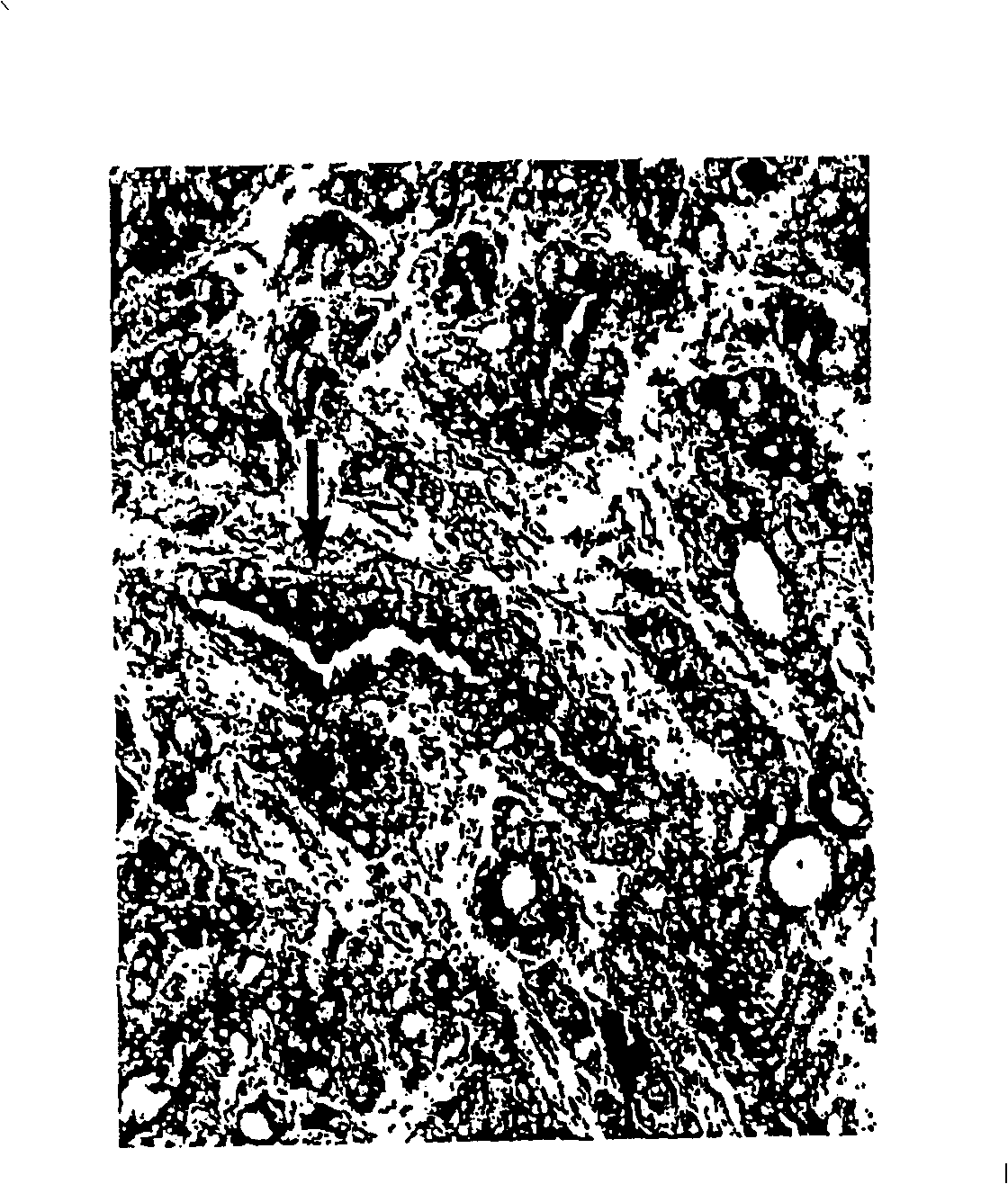Use of P2Y purinergic receptor expression for identifying preneoplastic and neoplastic states
A receptor and tumor technology, applied in the direction of anti-receptor/cell surface antigen/cell surface determinant immunoglobulin, antineoplastic drugs, microbial determination/examination, etc. Issues such as randomized and controlled trials of surgical radiation therapy outcomes
- Summary
- Abstract
- Description
- Claims
- Application Information
AI Technical Summary
Problems solved by technology
Method used
Image
Examples
Embodiment 1
[0057] Example 1. Production of Antibodies
[0058] Following the method adopted by Hansen et al. [15], human P2Y 2 [12], People P2Y 4 [13] Heren P2Y 6 [14] Clone the appropriate antigenic epitope of the receptor consensus sequence. used with P2Y 2 Non-homologous epitopes corresponding to the Leu226-Lys242 segment and equivalent P2Y 4 (Arg226-Arg242) and P2Y 6 (Cys220-Lys236) sequence. Various passes in P2Y 2 and P2Y 4 The epitope added N-terminal Cys was linked to diphtheria toxoid via a maleimide octanoate-N-hydroxysuccinimide cross-linker. All syntheses were performed in an ABI synthesizer using standard t-BOC chemistry [16]. The peptide-antigen cross-linked product was made into a 5 mg / ml suspension with water, and an aliquot was mixed with complete Freund's adjuvant to emulsify. This was followed by intramuscular injection of 1 ml emulsion containing 2 mg peptide and incomplete Freund's adjuvant, and the second, third, fourth, and fifth immunizations were perfor...
Embodiment 2
[0060] Example 2. Immunohistochemical procedure
[0061] Sections with a thickness of 8 μm were cut from unfixed frozen tissues or from paraffin-embedded tissues with a Reichert Jung 2800 cryogenic knife. After allowing the sections to air dry at room temperature for 1 hour, they were fixed in minus 20 acetone for 12 hours, and air dried at room temperature for 1 hour before antibody labeling. Combine it with monoclonal mouse, rabbit or sheep anti-P2Y 2 Incubate with primary antibody at room temperature. After washing, sections were incubated for 30 minutes with secondary antibodies: HRP-conjugated goat anti-mouse secondary antibody (Dako) diluted 1:30 for mouse primary antibody, HRP for rabbit primary antibody - Conjugated anti-rabbit secondary antibody or HRP-conjugated goat anti-sheep secondary antibody. After further washing the sections were immersed in 15% diaminobenzidine tetrahydrochloride (DAB-Sigma) for 10 minutes. Sections were rinsed, air dried and mounted in D...
Embodiment 3
[0063] Example 3. P2Y receptors in human (prostate) cancer tissue
[0064] In a study of 40 normal individuals and 40 human prostate cancer cases, P2Y in human prostate cancer tissues 2 Subtypes increased significantly. There are no visible markers in normal tissue or benign prostatic hyperplasia. P2Y in cancer tissue 2The labeling pattern was distinct, with a greater proportion of labeled acinar epithelial cells at all stages of prostate cancer, suggesting that oncogenic transformation is associated with P2Y 2 There is a direct correlation between the degree of acinar labeling, starting from the nucleus (stage 1; figure 1 ), developing into punctate markers outside the nucleus or in the cytoplasm (stage 2, figure 2 ), followed by deposition of apical and lateral epithelial cells (stage 3; image 3 ), accompanied by morphological changes in advanced stage 3 cases.
[0065] Combination of P2Y and P2X receptor antibodies
[0066] P2Xs are fast-acting ligand (ATP)-gated ...
PUM
 Login to View More
Login to View More Abstract
Description
Claims
Application Information
 Login to View More
Login to View More - R&D
- Intellectual Property
- Life Sciences
- Materials
- Tech Scout
- Unparalleled Data Quality
- Higher Quality Content
- 60% Fewer Hallucinations
Browse by: Latest US Patents, China's latest patents, Technical Efficacy Thesaurus, Application Domain, Technology Topic, Popular Technical Reports.
© 2025 PatSnap. All rights reserved.Legal|Privacy policy|Modern Slavery Act Transparency Statement|Sitemap|About US| Contact US: help@patsnap.com



